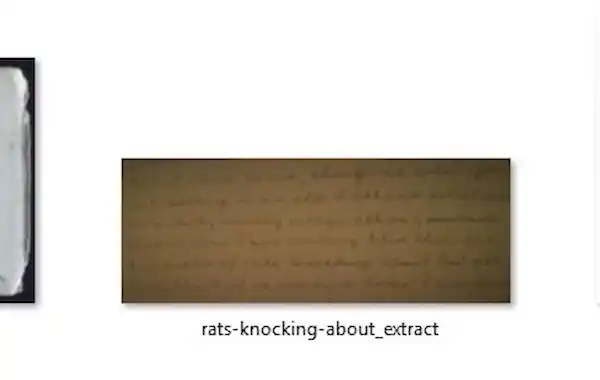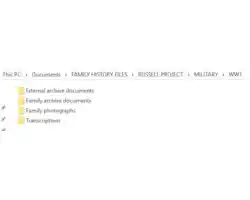19 March 2018
|
It's one thing telling your family story - but how do you uncover those clues in the first place? Discover hints and tips for working with your extended family’s archive collections to investigate the full picture of your family's past. Professional researcher Judith Russell explains the steps you need to take.
It's one thing telling your family story - but how do you uncover those clues in the first place? Discover hints and tips for working with your extended family’s archive collections to investigate the full picture of your family's past. Professional researcher Judith Russell explains the steps you need to take.
Readers may be interested in how I accessed and organised the evidence for my article in the April issue of Family Tree about my husband’s grandfather, Ned Russell, who was a prisoner of war 100 years ago in 1918.
The documents relating to Ned’s WW1 military service are owned by my elderly father-in-law, who lives in Hampshire. As I live in Glasgow, I can’t just pop round the corner!
So I had to make sure I had good photographs of all the documents connected with Ned’s wartime experience. I’ve known about these documents for many years, and seen them often, but every time I visit and look at them with my father-in-law, something new emerges from them.
To give an example, on a recent visit, my father-in-law had rearranged his archive and had found additional items. The leather wallet embossed with ‘King George V Hospital, Xmas 1918’ was something I had never seen before. There are no other clues to what happened to Ned when he arrived back in Britain after the war, so this was very interesting, although it’s one small item that could be missed easily.
When I checked out the details of this hospital, I found that it was one of the biggest military hospitals in existence at that time, that it was in London – which made sense, since Ned and Nellie lived in Middlesex – and that there was a whole online album of hospital photographs, digitised by the Wellcome Trust.
Although we didn’t actually spot Ned himself in the photographs, it still gave us an insight into the place where he spent time recovering, and it’s also a demonstration of how important it is to study every piece of information in every potential source, in order to extract the clues that can move your research on.
Get permission from your relatives!
I was very fortunate to have access to family archive documents that tell a story like Ned’s, but important considerations apply when documents don’t belong to you and you need to be able to study them from a distance. The first absolute rule is that you must have the permission of the archive’s owner to use the documents in it before you even begin. Specific additional permissions will be required if you plan to share or publish information that belongs to someone else.
Often, a sensitive approach is needed. It is worth emphasising, however, that an archive should be photographed as soon as is practicable – family papers can be vulnerable to wear, tear and even accidental clearouts, so taking measures to preserve them digitally are crucial.
Take photographs & keep them organised!
Once you have permission, begin by photographing everything. You may think at first glance that certain items or pages are less important, but clues may only become apparent later as you study the document contents in detail. Make sure before leaving the archive behind that all your photographs are clear, legible, and that you have not clipped off any details at the edge of your photographs. It’s also a good idea to back up your photograph file as soon as possible.
Secondly, label all your photographs. My tablet assigns date-related filenames to the photographs I take, so I have to rename them to make sure I know what each photograph contains and can access each page as required without trawling through the whole lot. Devise a file-naming system that puts the photographs into a sensible order. It’s also important to create an organised system of folders on your computer that allows you to find what you want and reminds you what you have. These photographs show just one suggestion, and each researcher develops their own filing system.
Study the records & transcribe them!
Thirdly, transcribe handwritten documents and create a separate transcription file for each document. That way, you can print out your transcription, giving you easier access to the text of the document without struggling through difficult handwriting each time you need to check something. Use a meaningful title or header for your transcription document, and ensure that the filename you use is easily identifiable.
Once all of the above organisation is in place, you can then begin to analyse the documents and photographs in detail, and pick out the clues that tell the archive’s story. It may be helpful at this stage to enter source details and notes into your genealogy software file. You may also want to create a timeline, showing what happened at what date, to give you a chronological sense of the archive’s contents.
Further research into the historical background, and additional online sources, will then add context to the story told by the private archive. I hope you enjoy my article, and good luck with developing your own private archive stories.
Tips!
1. Take good photographs of family documents. These can act as a back-up, and are useful for studying and minimising handling of the originals.
2. Seek out background sources, to gain a better understanding of your ancestor's experiences.
3. Make sure you have permission of whoever owns the family document to publish copies online or in print.









